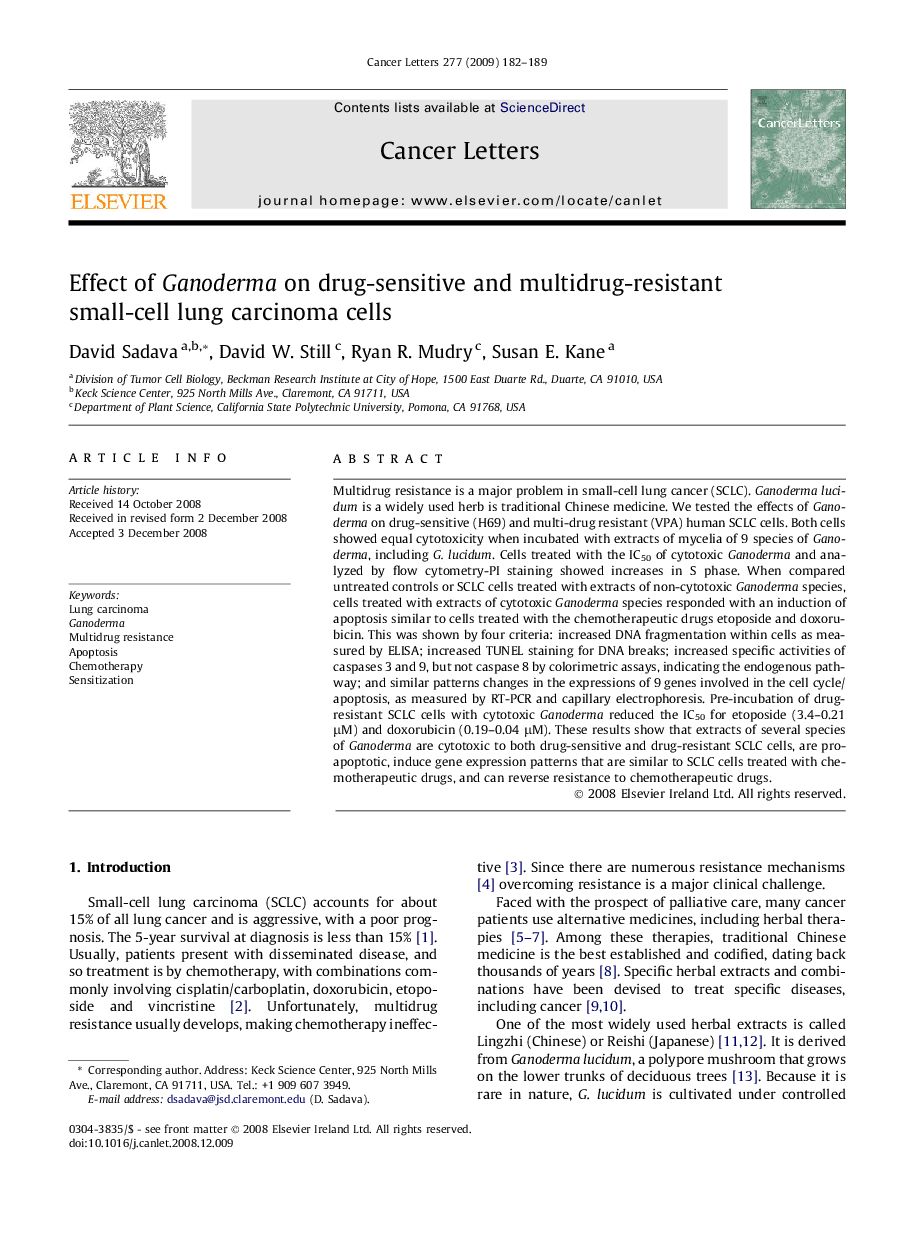| Article ID | Journal | Published Year | Pages | File Type |
|---|---|---|---|---|
| 2114444 | Cancer Letters | 2009 | 8 Pages |
Multidrug resistance is a major problem in small-cell lung cancer (SCLC). Ganoderma lucidum is a widely used herb is traditional Chinese medicine. We tested the effects of Ganoderma on drug-sensitive (H69) and multi-drug resistant (VPA) human SCLC cells. Both cells showed equal cytotoxicity when incubated with extracts of mycelia of 9 species of Ganoderma, including G. lucidum. Cells treated with the IC50 of cytotoxic Ganoderma and analyzed by flow cytometry-PI staining showed increases in S phase. When compared untreated controls or SCLC cells treated with extracts of non-cytotoxic Ganoderma species, cells treated with extracts of cytotoxic Ganoderma species responded with an induction of apoptosis similar to cells treated with the chemotherapeutic drugs etoposide and doxorubicin. This was shown by four criteria: increased DNA fragmentation within cells as measured by ELISA; increased TUNEL staining for DNA breaks; increased specific activities of caspases 3 and 9, but not caspase 8 by colorimetric assays, indicating the endogenous pathway; and similar patterns changes in the expressions of 9 genes involved in the cell cycle/apoptosis, as measured by RT-PCR and capillary electrophoresis. Pre-incubation of drug-resistant SCLC cells with cytotoxic Ganoderma reduced the IC50 for etoposide (3.4–0.21 μM) and doxorubicin (0.19–0.04 μM). These results show that extracts of several species of Ganoderma are cytotoxic to both drug-sensitive and drug-resistant SCLC cells, are pro-apoptotic, induce gene expression patterns that are similar to SCLC cells treated with chemotherapeutic drugs, and can reverse resistance to chemotherapeutic drugs.
